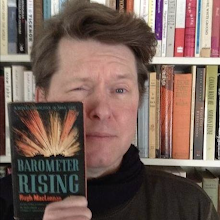 |
| Pandemic Tom Ardies New York: Doubleday, 1973 |
A follow-up to my most recent CNQ review.
In Tom Ardies' first novel, Their Man in the White House, hero Charlie Sparrow fails to thwart the Russians from installing a pawn as President of the United States. In Sparrow's last adventure, Pandemic, he tries to prevent a worldwide epidemic. I haven't read the latter, so have no idea whether he succeeds.
Here's hoping.
Here's hoping.
Their Man in the White House has an unusual publishing history. The first edition, from McClelland & Stewart, was published in September 1971. Macmillan followed a week or two later with the first UK edition. Two years later, a cheap Panther paperback hit the racks. And yet, this most American of thrillers has never been published the United States.
Of the three editions, I think Justin Todd's McClelland & Stewart cover is the best. True, the White House isn't white, but I like to think the artist, an Englishman, made it brown in recognition of the events of 24 August 1814, the day his countrymen and mine set Washington alight. How else to explain the plumes of smoke?
The Macmillan edition errs in its depiction of President Davis Marshall and his daughter Lisa, both of whom are described in the novel as being extremely attractive.
The Panther edition is elusive, but I've managed a small screen capture:
More Robert E. Howard than Cold War thriller, wouldn't you say?
The best Ardies cover ever is Fawcett's paperback edition of his second novel This Suitcase is Going to Explode. Published in 1976, it features a hologram:
Unusual for the time, this detail gives some idea of the effect:
So much better than the Hachette French translation, don't you think?
The cover of Une Valise qui explose is every bit as lazy as McClelland & Stewart's nonsensical Kosygin is Coming (1974).
A thriller set in Vancouver, Kosygin is Coming is Ardies' biggest selling novel. Angus & Robinson's UK first edition makes the city look like Manhattan.
Kosygin is Coming isn't much of a title; I much prefer Russian Roulette, the title given the 1975 screen adaptation starring George Segal. PaperJacks, publisher of some of the ugliest paperbacks this country has ever seen, really rose to the occasion with the movie tie-in.
However did PaperJacks manage it? By using the lobby poster, of course.
For all their flaws, the most interesting Tom Ardies covers are the earliest. Kosygin is Coming was followed by In a Lady's Service (1976), Palm Springs (1978)...
...then a sixteen year silence. Tom Ardies returned in with Balboa Firefly, published under the nom de plume "Jack Trolley."
 |
| Balboa Firefly New York: Carroll & Graf, 1974 |
In the interim, covers had become cheaper to produce and a whole lot less imaginative. Going by the reviews, the novels Ardies wrote as Trolley are his very best. I'm ashamed to admit I haven't read so much as one. His most recent, La Jolla Spendrift, was published in 1998.
Tom Ardies is now in his ninetieth year. Dare I hope for more?
I dare.























